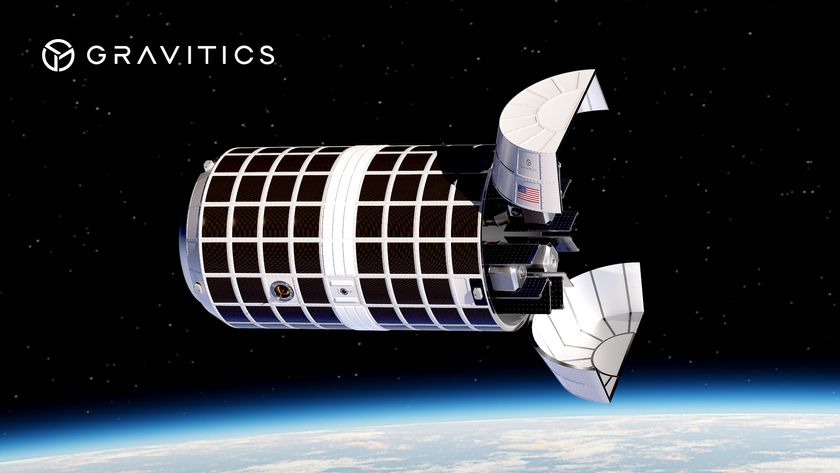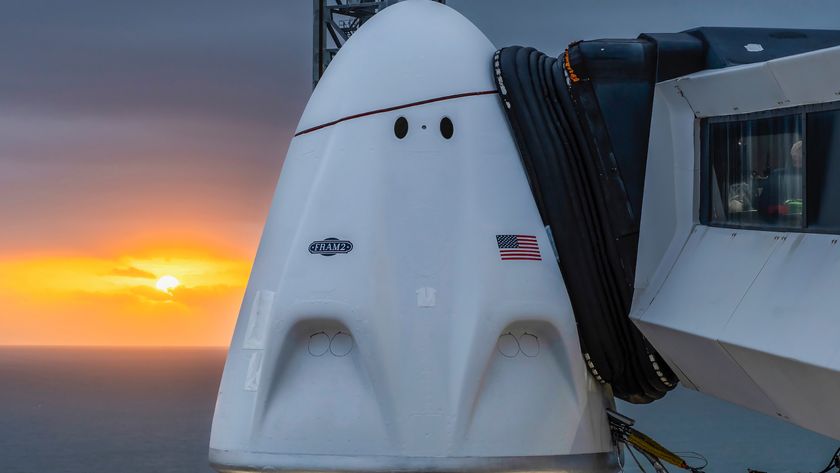Solar Sails Could Clean Up Space Junk
Future satellites could deploy solar sails to help takedown pieces of space junk floating around Earth and a tiny new spacecraft hopesto make it possible.
A British satellite the size of a shoe box is slated tolaunch next year to test how a solar sail can act as an atmospheric brake andend its mission in a fiery plunge. If successful, the one-year mission couldhelp lead to bigger, better solar sail spacecraft capable of trawling the spacearound Earth for dangerousspace junk, mission planners said.
Just having a cheap, reliable method of ending aspacecraft's life could go a long way toward limiting the size of the spacedebris cloud surrounding Earth. Even space shuttlemissions and the International Space Station must occasionally dodge spacejunk,which has collectively grown to more than 6,000 tons of debris leftover from 50years of abandoning spacecraft.
Most satellites rely upon propellant-based maneuveringthrusters that may or may not still function at mission's end ? and that's noteven considering the launch expense of carrying all that propellant mass. Bycontrast, the CubeSail would simply unfurl a 16 square-foot (5 square-meter)sail. Launch of the 6/6-pound (3-kg) sail is set for late 2011.
"Using the sail as a 'propellantless' deorbitingsystem will allow the extra mass gained to be used for payloads or to extendthe lifetime of a satellite further," said Vaios Lappas, an aerospaceengineer at the University of Surrey in the UK.
Such a sail would rely upon force of sunlight, and allowscientists to test solar sailing as a space propulsion alternative to other spaceengines which must carry their own propellant. It alsorepresents a much cheaper and possibly more reliable fallback technology.
Tiny satellite, big mission
Get the Space.com Newsletter
Breaking space news, the latest updates on rocket launches, skywatching events and more!
CubeSail could piggyback-launch with other missions as asmall nanosatellite. It will aim for an altitude of 435 to 497 miles (700 to 800km) and enter a sun-synchronous orbit so that it can match the motion of thesun across the sky, according to Lappas.
Yet no spacecraft has flownwith a solar sail as its main means of propulsion, in partbecause of launch failures that crippled efforts by the California-basedPlanetary Society and NASA. Japan successfully deployed solar sails in 2004,but did not try to use them for controlled flight.
That has led the University of Surrey team ? backed bythe European aerospace company Astrium ? to try and ensure mission successbased on the mantra of simplicity.
"We are keeping our design as simple as possibleusing well known materials, components and a simple design based on self-deployingbooms coiled around a simple roller mechanism," Lappas told SPACE.com.
Taking down space junk
Success might lead to future CubeSail designs that canattach to existing pieces of space junk and take them down, so thatspace-faring nations can finally begin cleaning up some of the orbitalmess.
"Protecting our planet and environment is key forsustainable growth," Lappas said.
At last estimate, there are than 20,000 pieces of spacetrash in orbit, according to the Space Surveillance Network. But tackling thespace littering problem will likely require a nanosatellite to approach atumbling piece of space junk travelling at high speed, researchers said.
The CubeSail team has already begun figuring out low-costtechnologies that could convert small satellites into space debris cleaners,Lappas noted. But for now, satellites with a mass up to 1,100 pounds (500 kg)might soon use the CubeSail design to end themselves more cheaply andefficiently.
"We are working on using carbon-made booms withincreased strength and lighter mass for larger sails," Lappas said.
- The Worst Space Debris Moments in History
- Images — Spotting Spaceships and Satellites From Earth
- SpaceJunk Mess Getting Messier in Orbit
Join our Space Forums to keep talking space on the latest missions, night sky and more! And if you have a news tip, correction or comment, let us know at: community@space.com.
Jeremy Hsu is science writer based in New York City whose work has appeared in Scientific American, Discovery Magazine, Backchannel, Wired.com and IEEE Spectrum, among others. He joined the Space.com and Live Science teams in 2010 as a Senior Writer and is currently the Editor-in-Chief of Indicate Media. Jeremy studied history and sociology of science at the University of Pennsylvania, and earned a master's degree in journalism from the NYU Science, Health and Environmental Reporting Program. You can find Jeremy's latest project on Twitter.












